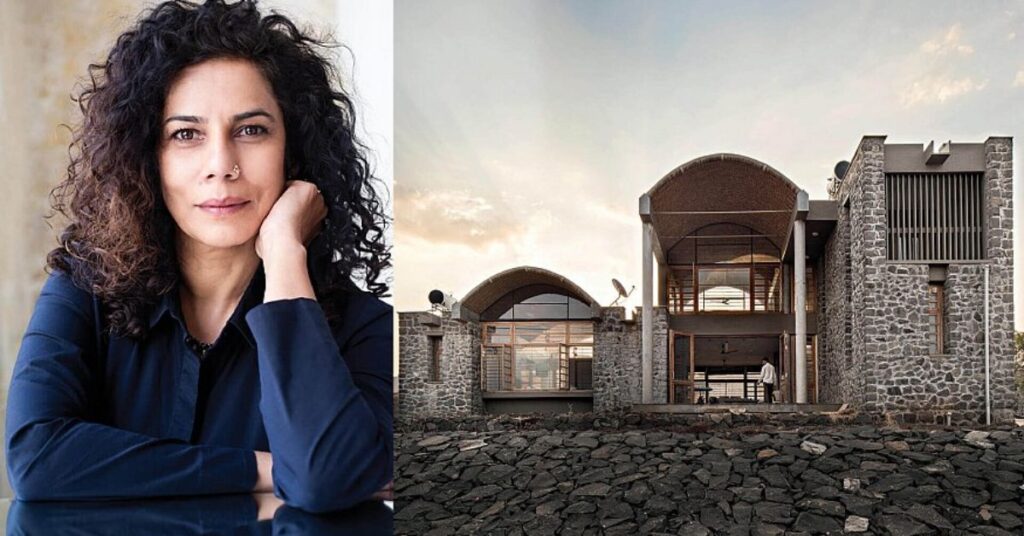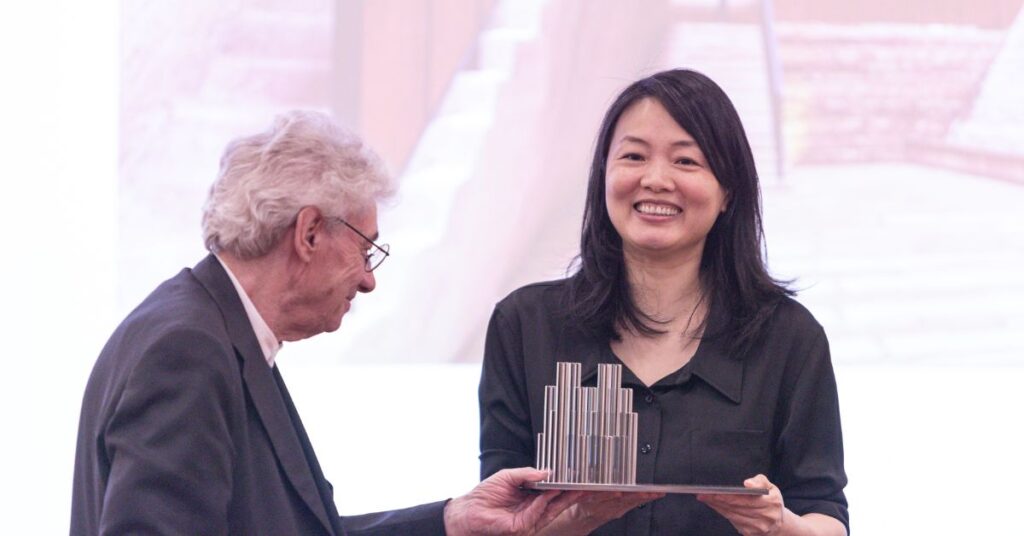Architecture is undergoing a transformation—and leading the charge is a fresh generation of architects under the age of 35. These trailblazers are not bound by traditional ideas of form and function. They’re climate-conscious, tech-savvy, socially aware, and globally engaged. Their designs don't just house people—they shape culture, champion sustainability, and reflect the rapidly shifting landscapes of cities and societies. Here, we spotlight five of the most promising architects under the age of 35 who are redefining the rules and pushing the boundaries of global design. Each of these trailblazers represents not just a singular talent, but a broader shift toward innovation, inclusivity, and intelligence in architecture. list of Top 5 Emerging Architects Under 35 1. Anupama Kundoo Anupama Kundoo continues to be an influential figure in the under-35 emerging space, especially with her focus on minimalist yet materially expressive architecture. Her approach centers on locally sourced materials, low energy use, and human-centric design. With academic stints at Parsons and the AA School, her work has become increasingly global while remaining deeply grounded in Indian context. Notable works like the Wall House and Volontariat Homes reflect her deep commitment to community and environment. She has taught globally and received prestigious awards, including the RIBA Charles Jencks Award and the UNESCO Global Award for Sustainable Architecture. Kundoo’s work continues to inspire a more inclusive, mindful, and resource-aware approach to architecture. 2. Xu Tiantian From the rural landscapes of China comes the powerful and socially conscious work of Xu Tiantian, founder of DnA_Design …
Top 5 Emerging Architects Under 35

Architecture is undergoing a transformation—and leading the charge is a fresh generation of architects under the age of 35. These trailblazers are not bound by traditional ideas of form and function. They’re climate-conscious, tech-savvy, socially aware, and globally engaged. Their designs don’t just house people—they shape culture, champion sustainability, and reflect the rapidly shifting landscapes of cities and societies.
Here, we spotlight five of the most promising architects under the age of 35 who are redefining the rules and pushing the boundaries of global design. Each of these trailblazers represents not just a singular talent, but a broader shift toward innovation, inclusivity, and intelligence in architecture.
list of Top 5 Emerging Architects Under 35
1. Anupama Kundoo

Anupama Kundoo continues to be an influential figure in the under-35 emerging space, especially with her focus on minimalist yet materially expressive architecture. Her approach centers on locally sourced materials, low energy use, and human-centric design. With academic stints at Parsons and the AA School, her work has become increasingly global while remaining deeply grounded in Indian context.
Notable works like the Wall House and Volontariat Homes reflect her deep commitment to community and environment. She has taught globally and received prestigious awards, including the RIBA Charles Jencks Award and the UNESCO Global Award for Sustainable Architecture. Kundoo’s work continues to inspire a more inclusive, mindful, and resource-aware approach to architecture.
2. Xu Tiantian

From the rural landscapes of China comes the powerful and socially conscious work of Xu Tiantian, founder of DnA_Design and Architecture. While many architects focus on mega cities, Xu turned her attention to China’s underrepresented rural communities. Her work is a testament to how thoughtful design can revitalize neglected regions by preserving heritage while introducing modern infrastructure. In Songyang County, she has developed a series of cultural and civic buildings that seamlessly integrate with the environment—bridges, teahouses, and museums that are built with local materials and labor. Her Bamboo Theater in Hengkeng Village is not only a beautiful structure but also a communal stage that brings people together, nurturing both tradition and tourism. Xu’s architecture doesn’t shout; it whispers respectfully to its context, illustrating that the future of architecture isn’t just in the cities, but also in the stories and identities of rural landscapes.
3. Chris Precht

One of the most visionary names in this space is Chris Precht, the Austrian architect who co-founded Studio Precht. Precht’s philosophy is rooted in the idea that buildings should be part of the ecological system—not separate from it. His work elegantly merges architecture with nature, creating spaces that are not only environmentally responsible but also emotionally enriching. In projects like The Farmhouse, Precht envisions modular homes that allow residents to grow their own food within the same structure, thereby promoting self-sustenance and reducing urban food dependency. His other design, The Tree Tower, is a vertical structure that functions like a forest, emphasizing clean air, biodiversity, and communal green living. Through his poetic yet pragmatic architecture, Chris Precht is redefining the urban narrative by proving that cities can be sustainable ecosystems instead of concrete jungles.
4. Mariana Popescu

In a very different yet equally impactful domain, Mariana Popescu, a Romanian architect and researcher based in the Netherlands, is pushing the boundaries of construction technology. Working at ETH Zurich, she specializes in knitted textile formwork—a groundbreaking method that uses digitally fabricated textiles to mold complex concrete forms. This technique not only significantly reduces material waste but also enables architectural expressions that were once difficult or expensive to achieve. Her most celebrated project, KnitCandela, pays homage to the fluid elegance of Spanish-Mexican architect Félix Candela while introducing a radically new method of construction. Mariana’s approach bridges the gap between technology and art, showing that sustainable innovation doesn’t have to compromise on aesthetic value. Her work speaks to a future where buildings are lighter, smarter, and more environmentally considerate, created with precision and care through digital means.
5. Jason Long

Across the Pacific, in the bustling cultural matrix of the United States, Jason Long is making waves as a partner at the internationally renowned firm OMA (Office for Metropolitan Architecture). While OMA is known for its conceptual boldness, Long brings a strong civic and humanistic focus to its U.S. projects. His work demonstrates how architecture can be a catalyst for public life, especially in cities that are grappling with rapid change. The Audrey Irmas Pavilion in Los Angeles is a prime example—its daring, angular form houses both spiritual and cultural programming, symbolizing harmony and plurality. Another transformative project under his leadership is POST Houston, a large-scale adaptive reuse that turns a historic post office into a multifunctional hub of art, food, and innovation. Long’s work exemplifies how architecture can be both iconic and inclusive, monumental yet democratic—responding not just to clients, but to communities.
Emerging Themes Among the Next-Gen Architects
These architects may come from different continents and cultures, but several unifying themes shape their practices:
Sustainability as Standard
Gone are the days when sustainability was an afterthought. Today’s young architects design with ecological balance as a first principle—whether it’s through material reuse, vertical farming, or off-grid energy systems.
Technology + Tradition
Emerging architects are blending parametric tools and AI algorithms with traditional craftsmanship. It’s not tech or tradition—it’s both, in dialogue.
Human-Centered Design
Every project by these architects considers how people live, move, and interact. There’s a focus on social impact, community interaction, and emotional experience—not just form-making.
Transdisciplinary Thinking
Today’s architects often wear many hats: researchers, entrepreneurs, climate scientists, and policy influencers. Their work crosses into urbanism, sociology, agriculture, and more.
Why These Architects Matter Now
As the world faces unprecedented challenges—climate change, mass urbanization, housing crises—the future of the built environment will depend on bold, compassionate visionaries. These under-35 architects aren’t just reacting to problems—they’re redesigning the systems that cause them.
Their work teaches us that architecture is no longer just about buildings. It’s about cultures, ecologies, technologies, and ultimately, people.
Final Thoughts
The architects profiled here aren’t the future of the profession—they’re the present, reshaping it with intelligence, care, and fearless imagination. As they step onto the global stage, their ideas are likely to influence everything from how we grow food to how we worship, heal, and coexist.
Their message is clear: architecture is no longer just a career—it’s a responsibility to the planet and its people.


